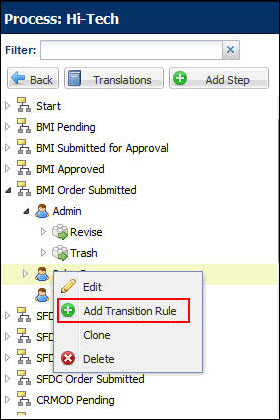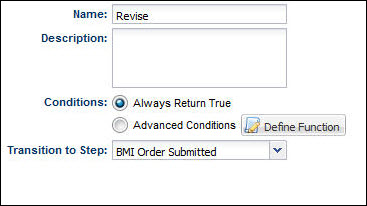Overview
What are they?
Transition rules designate when the next document or document state triggers. Actions that do not take users to a different document (or document state) do not require transition rules.
How do they work?
Within transition rules you can also set up email, fax, or XML notification to trigger when an action occurs. Transitions from one step to another will also trigger auto-forwarding rules that have been set up for the step a transaction moves into.
Here are some rules regarding transition rules:
- They are bound to one, and only one, action.
- They can change the step in the Commerce Process.
- If a user does not belong to a profile in the next step, the user loses all access rights to the process.
- You can order transition rules to set rule precedence.
- When the commerce system can trigger more than one rule for an action in a single step, the system triggers the transition rule with the highest precedence.
Administration
![]() Add a Transition Rule (Moving Docs between Workflow Steps)
Add a Transition Rule (Moving Docs between Workflow Steps)
Notes
Transition rules are tied to profiles and actions, rather than timers exclusively. This means, a transition rule will trigger if any user in the profile performs the Commerce action.







